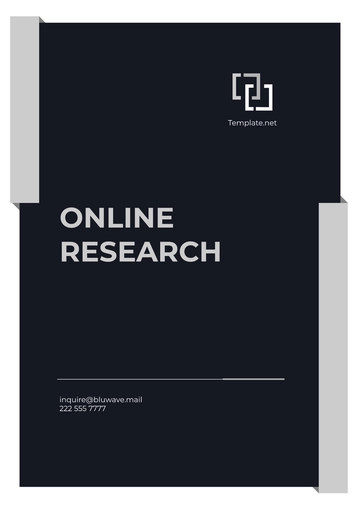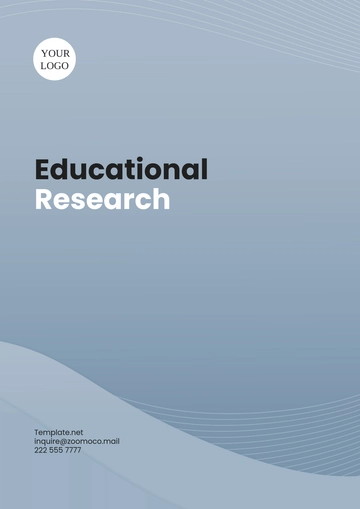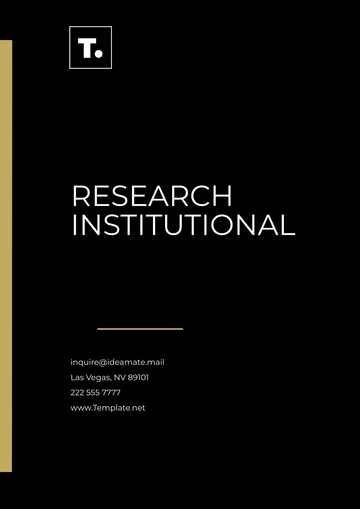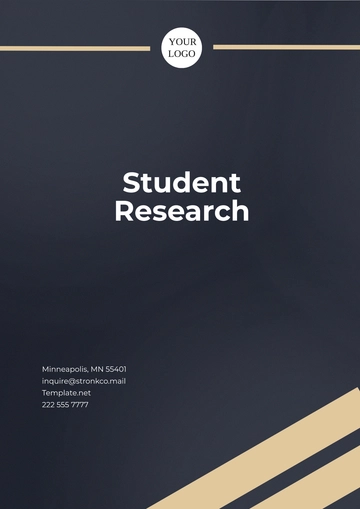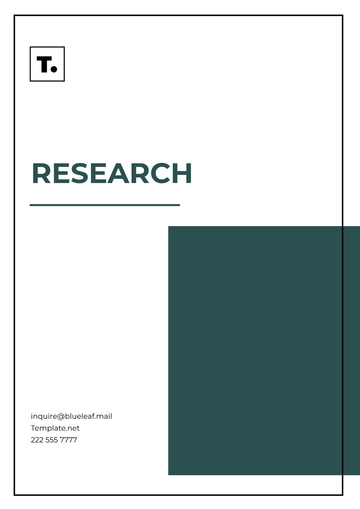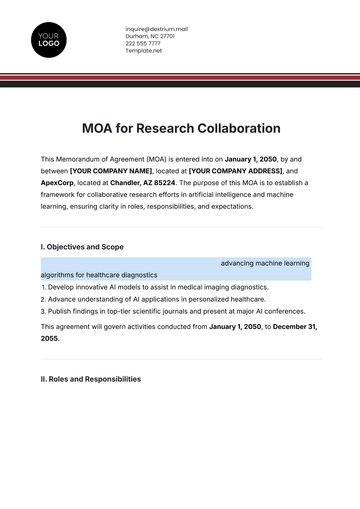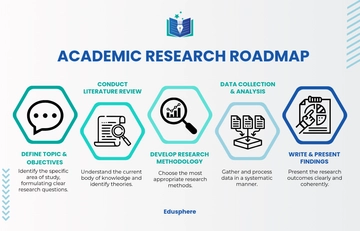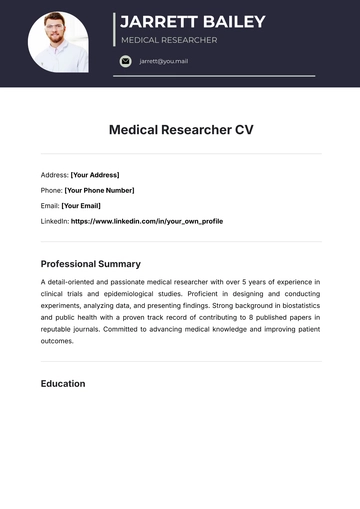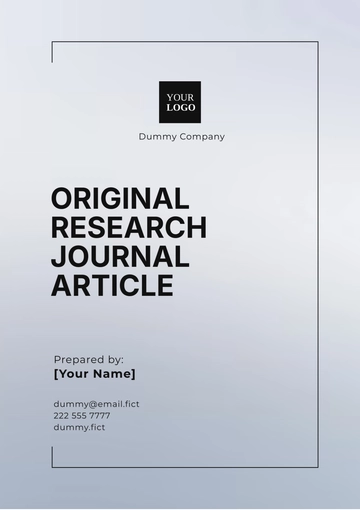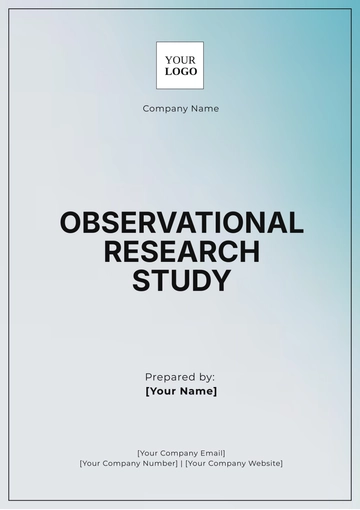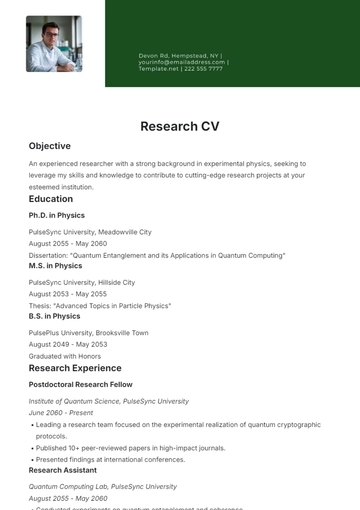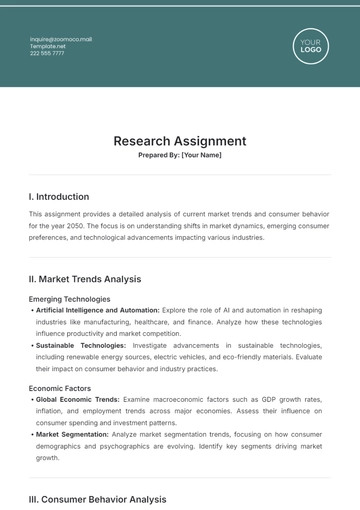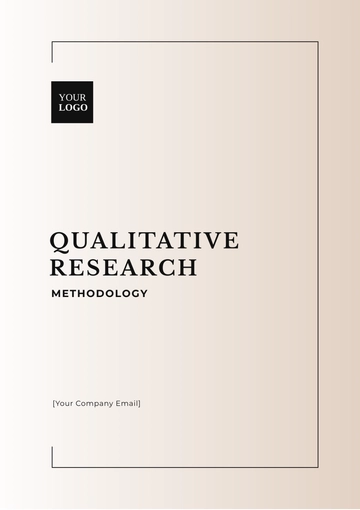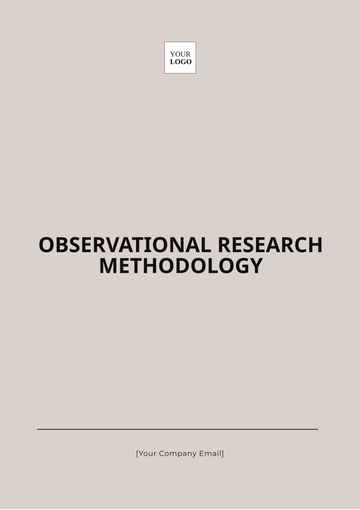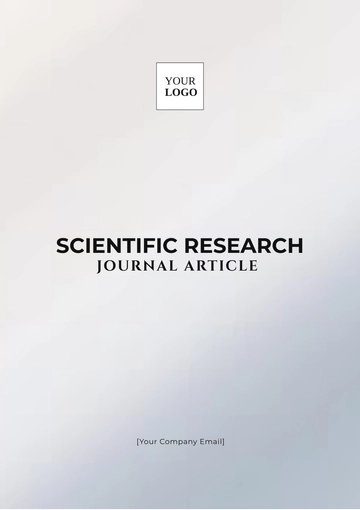Exploratory Research in Review Structure
Prepared By: [YOUR NAME]
Date: [DATE]
I. Introduction
A. Purpose
This research investigates how remote work arrangements affect employee productivity and job satisfaction. It aims to uncover underlying factors influencing these outcomes and propose preliminary insights for organizations.
B. Background
The shift to remote work, accelerated by recent global events such as the COVID-19 pandemic, has transformed traditional work environments. Understanding how this shift affects employee performance and satisfaction is vital for companies seeking to adapt to new working conditions and improve their workforce management strategies.
C. Scope
This review examines empirical studies and surveys conducted in the past five years across various sectors, including finance, healthcare, and education, excluding sectors with extensive existing research like technology.
II. Literature Review
A. Existing Research
Smith (2051) conducted a survey of 500 remote workers, finding a 15% increase in productivity. Conversely, Jones (2052) observed a decline in team cohesion among remote teams, based on interviews with 30 managers and employees.
B. Gaps
While several studies address productivity and team cohesion, there is limited research on the impact of remote work on mental health, especially in high-stress professions like emergency services and customer support.
III. Methodology
IV. Findings
A. Initial Insights
The study found that remote work led to a 20% increase in individual productivity but showed significant variation in job satisfaction, which was influenced by factors such as communication frequency and work-life balance.
Finding | Details |
|---|
Productivity Increase | Remote work led to a 20% average increase in individual productivity. |
Job Satisfaction Variation | Job satisfaction varied widely, with scores ranging from 50% to 85% satisfaction. |
Influencing Factors | Key factors influencing job satisfaction included communication frequency, work-life balance, and role-specific challenges. |
B. Themes
Three primary themes emerged: the need for regular virtual communication, challenges in maintaining work-life balance, and differing impacts on job roles such as management versus technical positions.
Theme | Description | Percentage of Participants Affected |
|---|
Need for Regular Virtual Communication | Participants noted that consistent virtual meetings and updates were crucial for maintaining team cohesion. | 75% |
Challenges in Maintaining Work-Life Balance | Many employees struggled to separate work from personal life, leading to increased stress and burnout. | 65% |
Differing Impacts by Job Role | The impact of remote work varied significantly between management and technical roles, with management facing more challenges in team cohesion. | 55% (Management), 45% (Tec |
V. Discussion
A. Interpretation:
B. Significance
C. Implications for Future Research:
VI. Conclusion
A. Summary
Main Findings: The research indicates that remote work can significantly increase productivity by 20%. However, job satisfaction varies widely, influenced by factors such as communication frequency and work-life balance. Regular virtual communication positively impacts satisfaction, while challenges with balancing work and personal life can reduce it.
B. Recommendations
C. Future Research
VII. References
Smith, J. (2051). The Impact of Remote Work on Productivity. Journal of Work Psychology, 34(2), 45-60.
Jones, L. (2052). Team Dynamics in a Remote Work Environment. Organizational Behavior Review, 29(4), 85-99.
Research Templates @ Template.net



